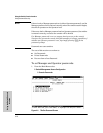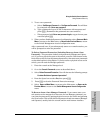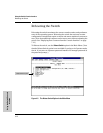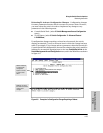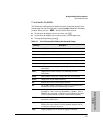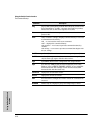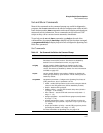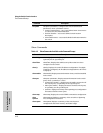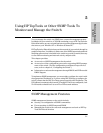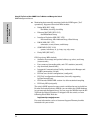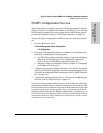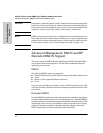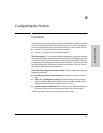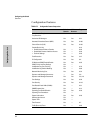
4-18
Using the Switch Console Interface
The Command Prompt
Using the Switch Console
Interface
Show Commands
Table 4-3. Show Commands Available at the Command Prompt
set system set system <parameter>; Configures the switch identification
parameters, where <parameter> can be:
• contact <contact-name> -- sets a user-defined name for someone
to contact for switch administration.
• location <location> -- sets a user-defined switch location
description.
• name <switch-name> -- sets a user-defined identification name for
the switch.
Command Description
show bridge show bridge [port-number]; Displays the switch address table, or
optionally for the specified port.
show filters show filters; Displays the traffic/security filters that have been
configured on the switch.
show ip show ip; Displays the switch IP address configuration. If multiple
VLANs are configured, the IP address configuration for all VLANs
is displayed.
show module show module; Displays status information for any modules installed
in the switch.
show port show port <parameter>; Displays status information for the switch
ports, where <parameter> can be:
• counters [port-number] -- displays network traffic counters for all
the switch ports, or optionally, for the specified port.
• status [port-number] -- displays the status of all the switch ports,
or optionally, for the specified port.
• spantree -- displays a summary of the spanning tree configuration
and status of all the switch ports.
show snmp show snmp; Displays the switch SNMP communities configuration.
show
spantree
show spantree; Displays a summary of the switch-level Spanning
Tree configuration and status.
show system show system; Displays a summary of the switch system
configuration and switch memory and buffer usage.
Command Description



